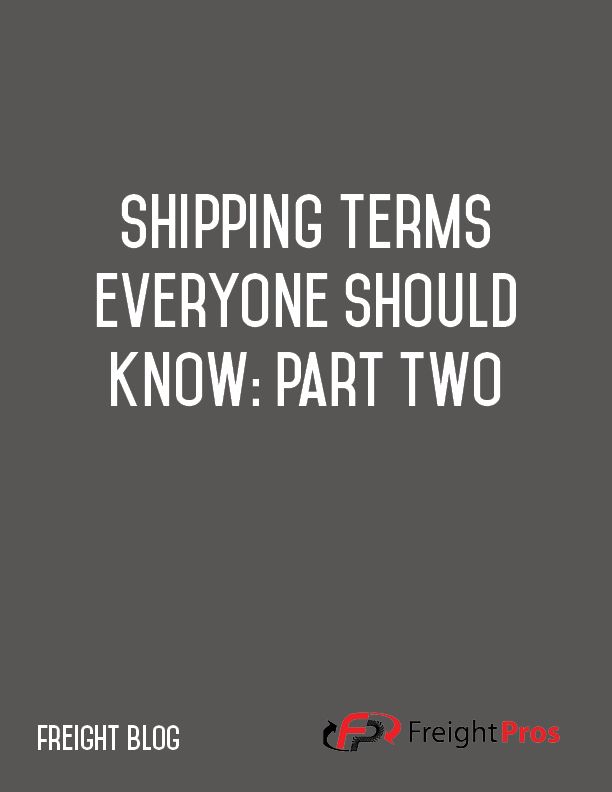
This is part two of our shipping terms you should know, so if you missed our first post, Freight Terms Everyone Should Know, make sure to check it out. We also have an excellent collection of Freight Papers if you want to learn more about LTL or Truckload shipping, and download our Beginner’s Guide to Freight Shipping, all for FREE. Now, for the shipping terms…
POD/DR – POD stands for Proof of Delivery while DR stands for Delivery Receipt and though they may be two different terms they are the same document signed at the time of a freight’s delivery. Each shipment (both LTL & TL) will have a POD/DR, so if you’re the consignee and the driver/carrier doesn’t offer you a piece of paper to sign then it’s important to call your freight broker or ask the driver directly for the POD or DR.
The most important part of the delivery process is to look for damage at the time of signing. If a POD/DR is signed “clean” AKA “with no notation of damage,” then it becomes very difficult to file a freight claim for lost or damaged freight. Get our claims Freight Paper for more information.
Accessorial – A freight accessorial is a shipping term for any additional service applied to an LTL or TL shipment. These accessorials range from liftgates, notify consignees, to limited access shipping and residential delivery services, as well as a host of others.
Accessorials can be paid for up front before pickup if you know that you will require them, or they may be added in transit by the carrier in order to deliver the freight. Check out our Cheat Sheet for Additional LTL Services for more information.
NMFC – This is the acronym for the National Motor Freight Classification. This shipping term is often used in context of the NMFC number which helps to determine class for all LTL shipments.
Freight class is an especially complicated part of the shipping/freight process, but know that each and every LTL shipment will have an NMFC number and without it on the BOL, you’re more likely to get hit with a Re-Class.
Reconsignment – Here’s a shipping term that you might be familiar with if you’ve ever had a change of plans with your freight. A reconsignment happens when freight that is already in transit is re-directed from one delivery location to another.
This charge can vary based on how far apart the delivery locations are. For instance, if the new location is just down the street, the charge will probably be minimal. However, if freight was heading to California and is being reconsigned to Florida, you will be in for a hefty reconsignment fee.
Reefer – A reefer truck is used to transport goods that need to be temperature controlled. Though they are most often used to refrigerate items, there are occassions where they can keep freight warm over a long period of time.
If you need to ship something that needs to be frozen (or warmed) make sure that you get with your freight broker and convey this information BEFORE the pickup is arranged. Reefer trucks are limited and can be hard to find.